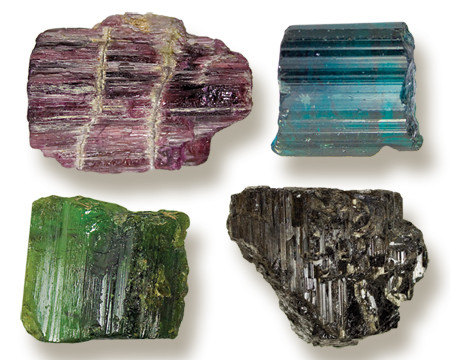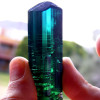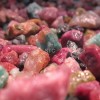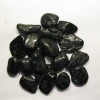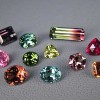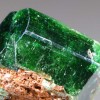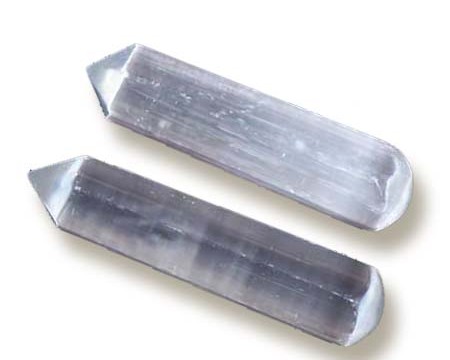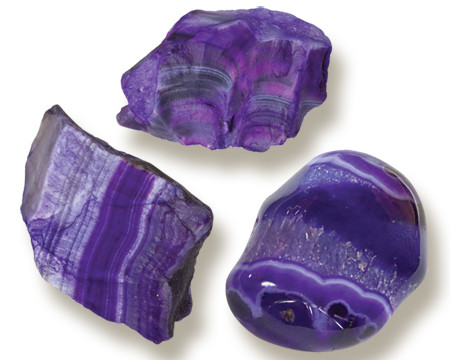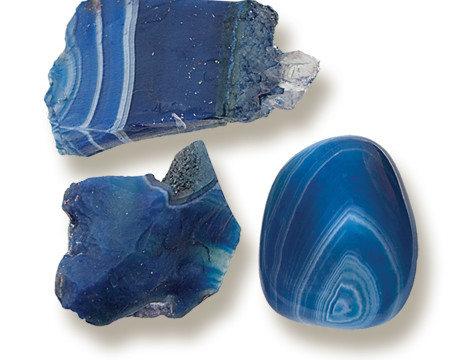Product Description
FOUND IN: TANZANIA, MADAGASCAR, BRAZIL, AUSTRALIA, SRI LANKA, RUSSIA & USA
Tourmaline’s name comes from the Sinhalese word “turmali,” which means “mixed.” Tourmaline, occurring in more colors and combinations of colors than any other gemstone variety, lives up to its name. Known for centuries, tourmaline first gained popularity when the Dutch began to import it in the early 17th century from Sri Lanka . Tourmaline is actually the name of a group of related mineral species. In gemological practice, individual species names are not used. Instead, all are simply termed tourmaline.
Color is the major characteristic for tourmaline. This stone is found in more hues, shades and nuances than any other gem. Here are some of the most common varieties that are recognized in the gem trade.
Rubellite – Varying in color from mid to deep reds resembling ruby, rubellite is one of the rarest and most valuable tourmalines. Many gems in the 17th century Russian Crown jewels, originally thought to be rubies, are actually rubellite tourmalines.
Indicolite – From bright blue hues to bluish green colors, indicolite tourmaline is another rare tourmaline color, and high quality specimens are regarded as quite collectable.
Chrome – Chrome tourmaline is green, but is considered different from the regular greens as it derives it rich green color from trace elements of chromium. Found in East Africa , chrome tourmaline is rare and is usually found only in smaller sizes.
Bi-Color – Variations, zones and color bands in tourmaline are often purposefully accented with the cutting style to show bands and color zones in the gem. Occurring in uncountable colors variations, these are often seen in long acicular crystals.
Watermelon – Bi-color tourmalines which show a green skin and a red core; these are sometimes cut as slices
Canary – Bright yellow tourmaline from Malawi .
Paraíba – A rare blue-green tourmaline containing copper, Paraiba tourmaline can be found in amazing bright neon hues and can command thousands of dollars per carat. Found in a single area in Paraiba, Brazil, it is generally found in comparatively small sizes for tourmaline. Recent finds of copper content tourmaline in Nigeria and Mozambique have also produced similar bright neon tourmaline.
Cat’s Eye – Chatoyant tourmaline in a variety of colors. It is often found in a rich green.
Color-Change – Changes from green in daylight to red in incandescent light.
The many different colors or Tourmaline mean that this stone can easily be mistaken for just about any other gemstone. Many stones in the Russian Crown jewels from the 17th Century once thought to be rubies are actually Tourmalines.
METAPHYSICAL:
All tourmalines are said to enhance understanding, increase self-confidence and amplify psychic energies. They are told to neutralize negative energies, dispel fear and grief as well as aid in concentration and communication.
They are used in an effort to relax the body as well as the mind, and to aid in the treatment of infectious diseases, anxiety, blood poisoning, arthritis and heart disease.
In general tourmalines are said to enhance flexibility, objectivity, compassion, happiness, serenity, balance, positive transformation, healing, strength, tolerance and understanding. It is told to be an excellent channeling stone for communication with the higher forces.
One might consider the family of tourmalines a bit like batteries to ones electromagnetic system. Charge yourself overnight by holding these stones in your hands, or by placing them under your pillow, or place them on a bedside table pointing towards you.
SCIENTIFIC:
Color: Colorless, Pink, Red, Yellow, Brown, Green, Blue, Violet, Black, Multi-Colored
Color of streak: White
Moh’s hardness: 7 – 7½
Specific gravity: 3.02 – 3.24
Cleavage: None
Fracture: Uneven, Small Conchoidal, Brittle
Crystal system: Hexagonal (Trigonal)
Chemical composition: SiO2 silicon dioxide (NaLica) (Fe11 Mg MN Al) Al ((OH) (BO) Si6 O18)
Transparency: Transparent, Opaque
Refractive index: 1.554 – 1.553
Double refraction: -0.014 to -0.044
Dispersion: 0.017
Pleochroism: Red: Dark Red-Light Red, Yellow: Definite, Dark Yellow-Light Yellow, Brown: Definite, Dark Brown-Light Brown, Green: Strong, Dark Green-Light Green, Blue: Strong, Dark Blue-Light Blue
Absorption spectrum: Red: 5500, 5370, 5250-4610, 4560, 4510, 4280 Green: 4970, 4610, 4150
Fluorescence: Colorless; Weak; Green-Blue, Red, Pale Yellow, Red-Violet, Pink, Brown, Green, Blue

